
It’s that time of year again: daylilies are blooming. I see them in yards, along the road, and, best of all, growing in several spots on my own property. And those fiery orange blooms are just asking to become a unique country wine!
One of the best parts about making daylily wine is the ease of harvesting: no walking through bug-filled brush (like honeysuckle), no painstaking removal of tiny blossoms from stems (like elderflower). There are few insect inhabitants, and the odd pollinator found in the blossom readily leaves – no eviction needed. For the record, though, I do leave blooms for the pollinators.
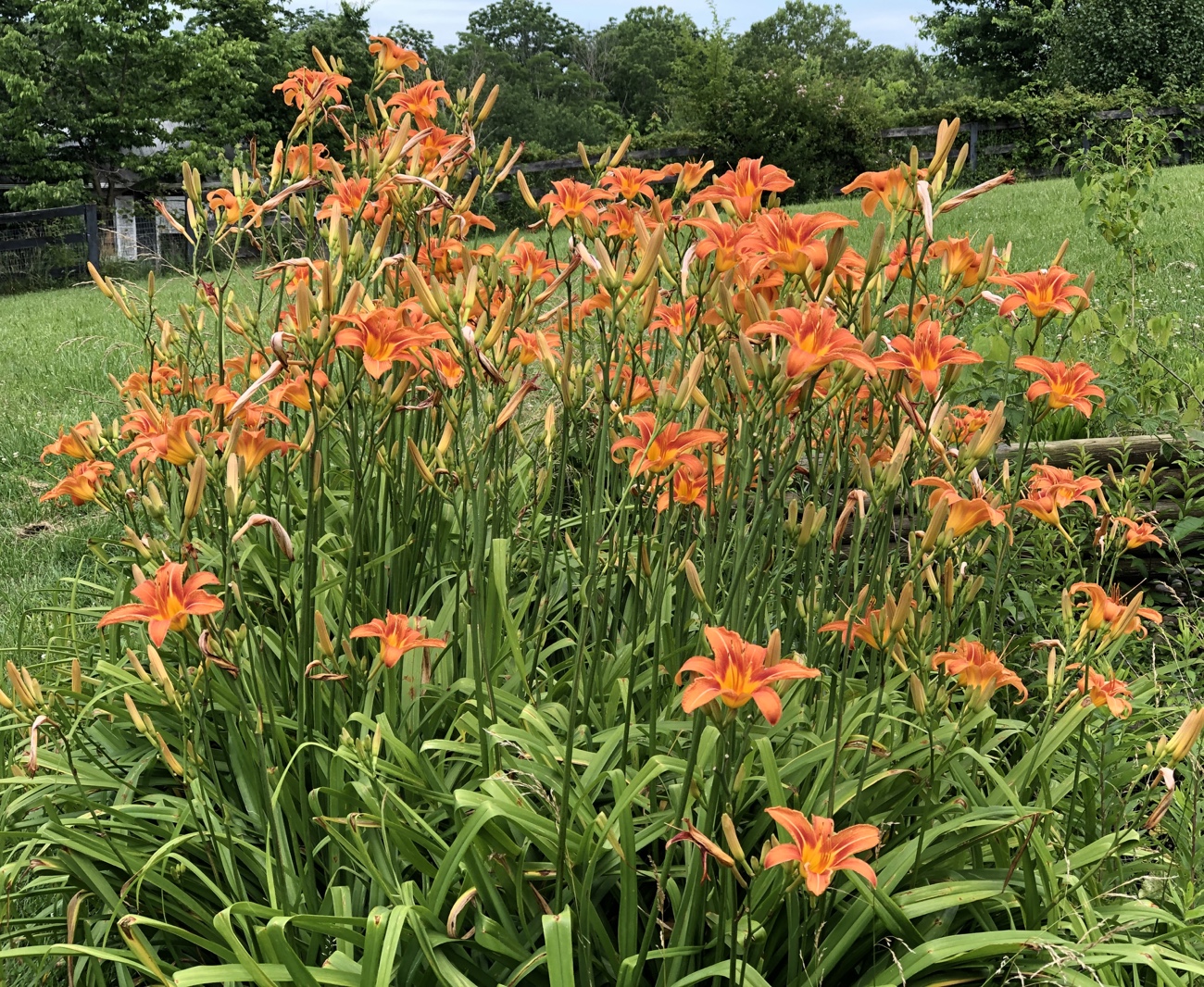
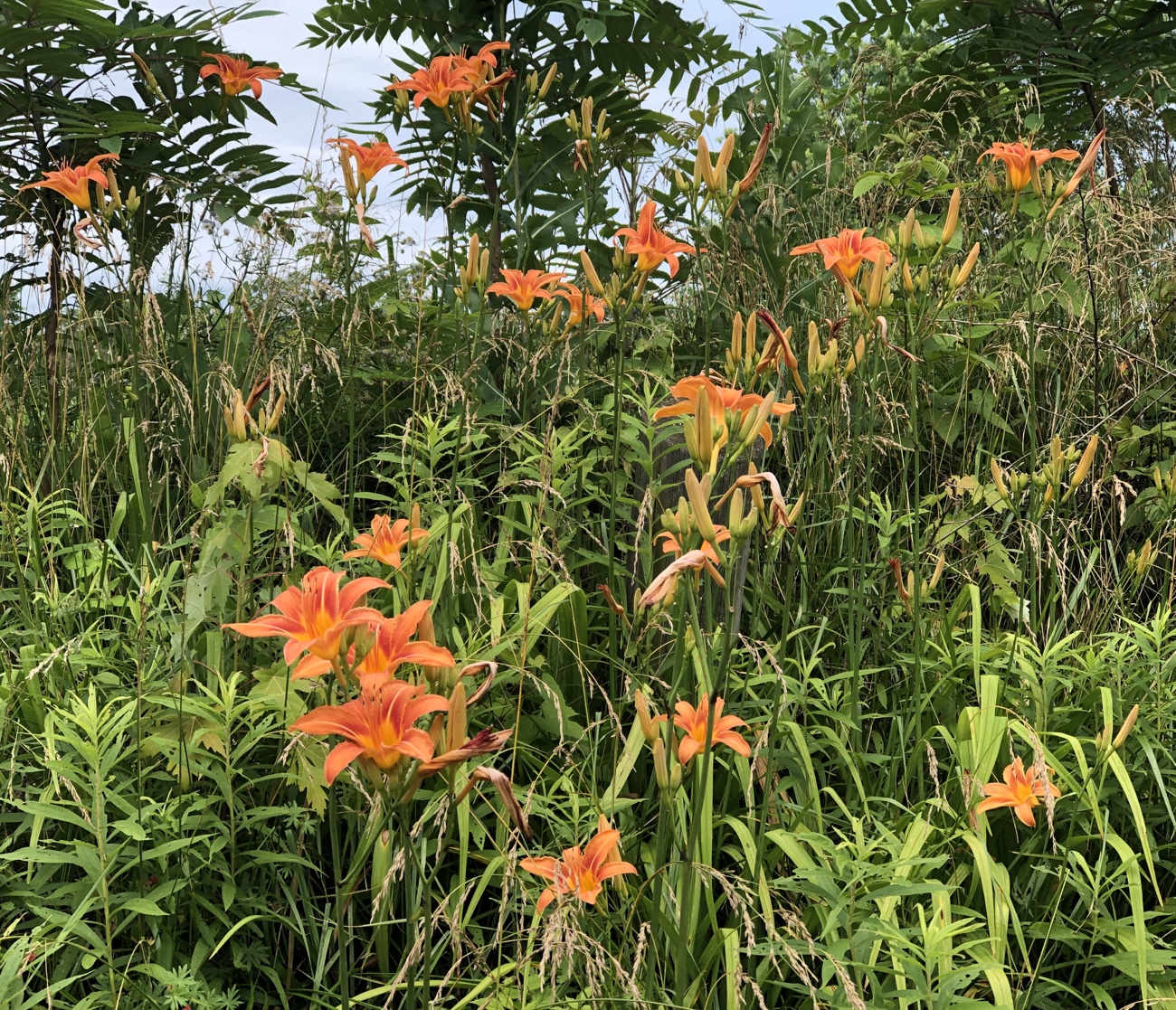
Another bonus is that it’s really easy to cut the green part of the stem off with a knife – no plucking necessary. The green part can apparently make you ill if you consume it, so I cut up about 1/4″ to remove the stem and the green bottom of the flower.
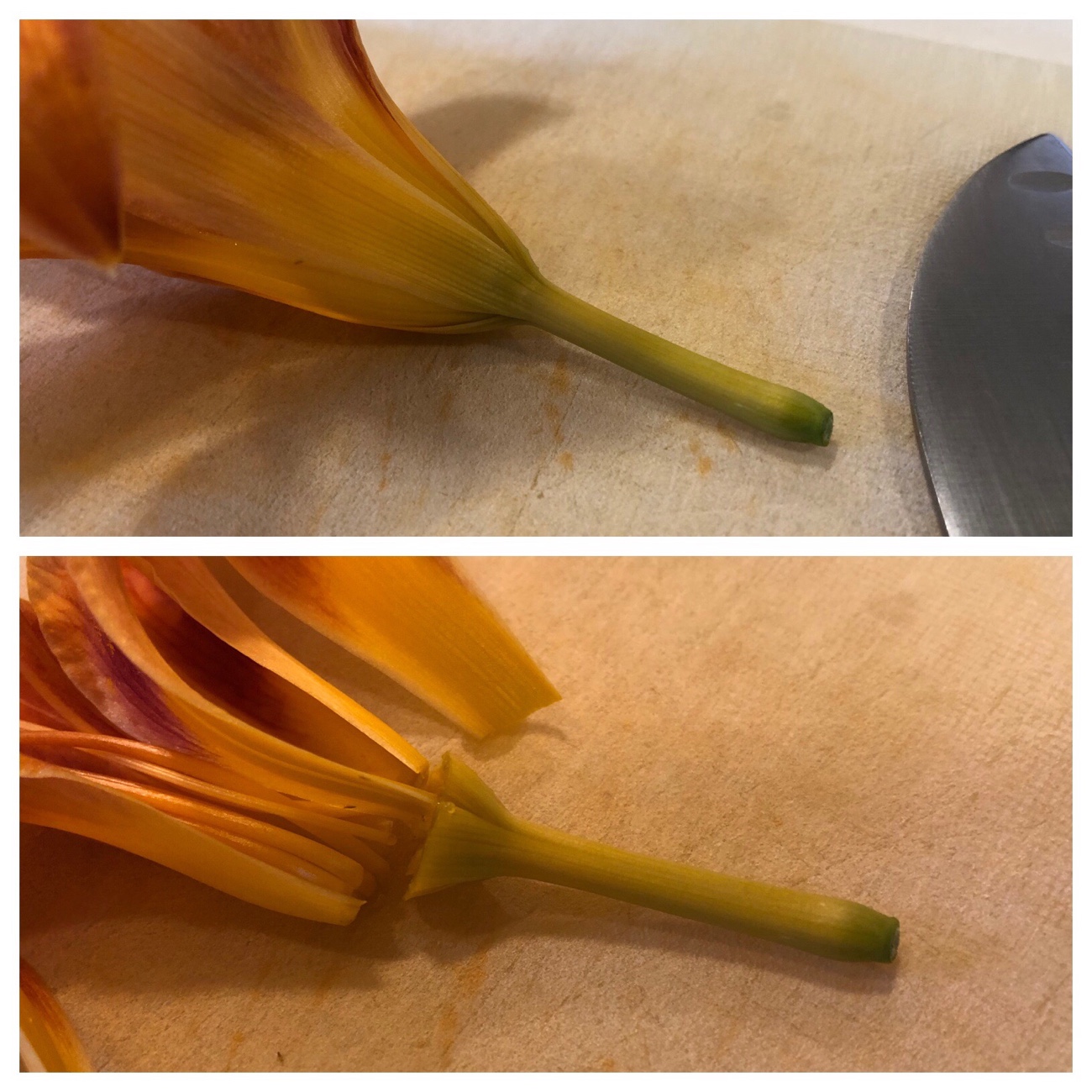
While preparing the flowers, I start about a liter of water boiling on the stove. When it reaches a boil, I turn off the heat and add 2 pounds of sugar, stirring until dissolved. Once dissolved, the liquid is carefully poured over the petals (and either chopped raisins or white grape juice) in the fermenting bucket and allowed to steep for about 10 minutes. On average, I find that I pick about 65 blooms per gallon batch.
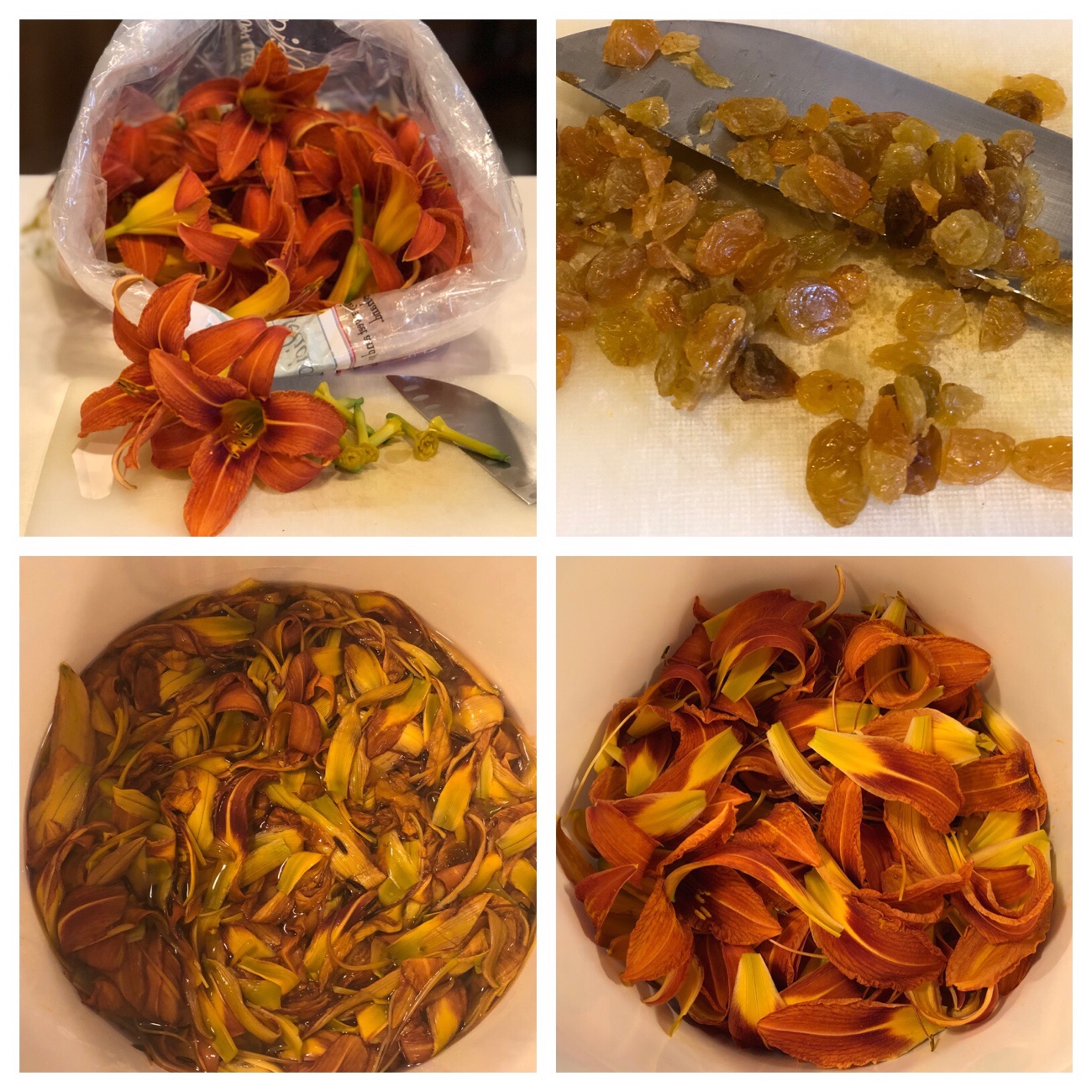
After the “tea” has steeped, the remaining water, acid blend, yeast nutrient, and tannin powder is added. I let it cool for a few hours, then pitch the yeast; this year, I’m experimenting by making batches with champagne and Lalvin yeasts.
I’ve also skipped the frozen grape juice concentrate Jack Keller’s recipe calls for (only because I don’t keep it on hand) and subbed either chopped golden raisins, white grape juice concentrate, or dark raisins, and have also reduced the sugar in a couple of batches. I also added sliced lemon and oranges to another batch. I’ve logged these variations and will record the results for future winemaking reference.
Several of the batches have now been moved to secondary fermentors and are a sight to behold: vibrantly pink-orange, almost flamingo-colored, and should clear to a warm amber-orange hue in time. Soon, we’ll recall the loveliness of these no-maintenance “weeds” as we sip the finished wine from our porch rocking chairs.
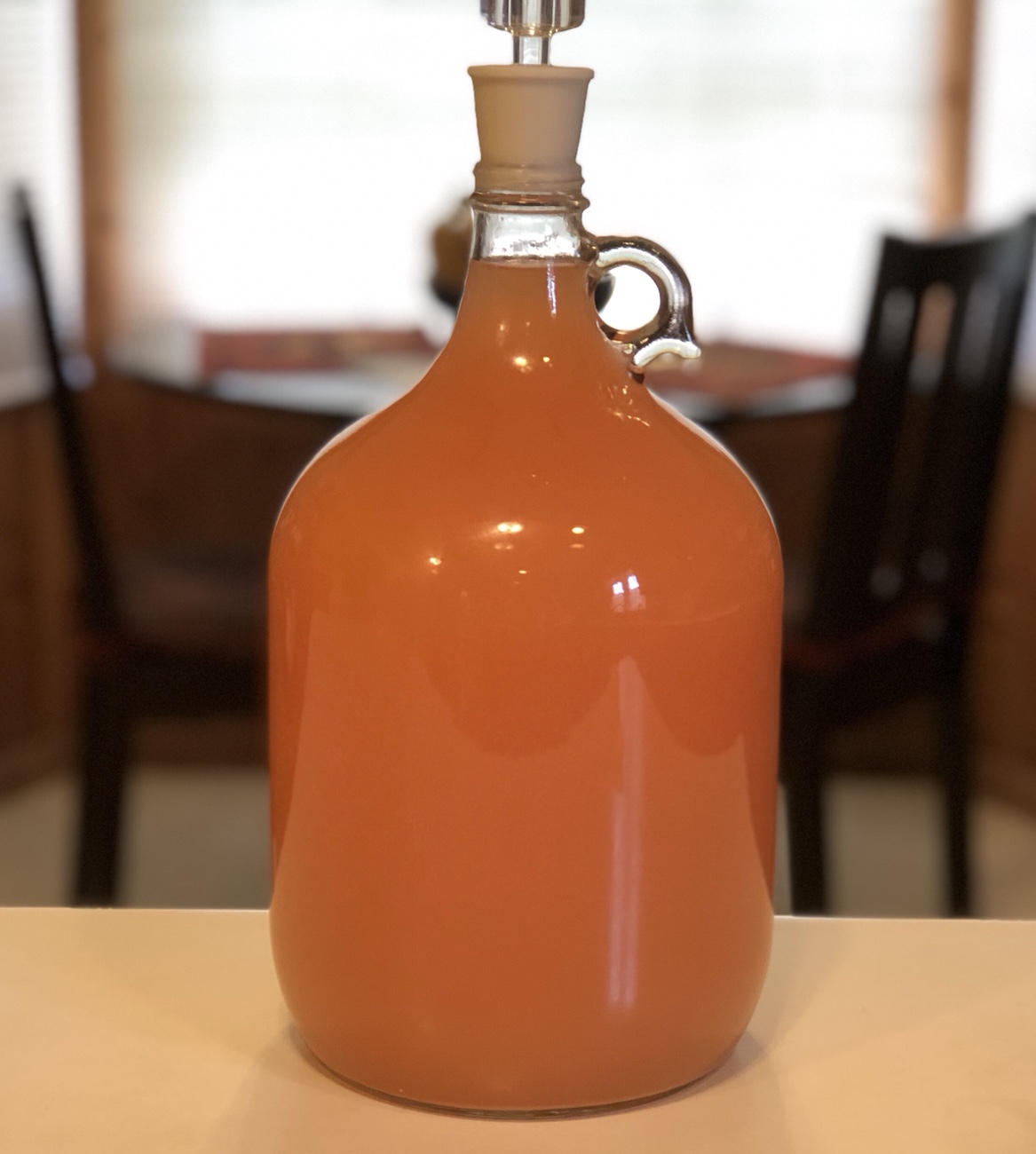

Comments are closed.